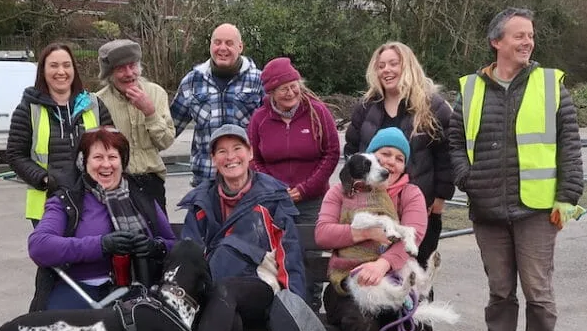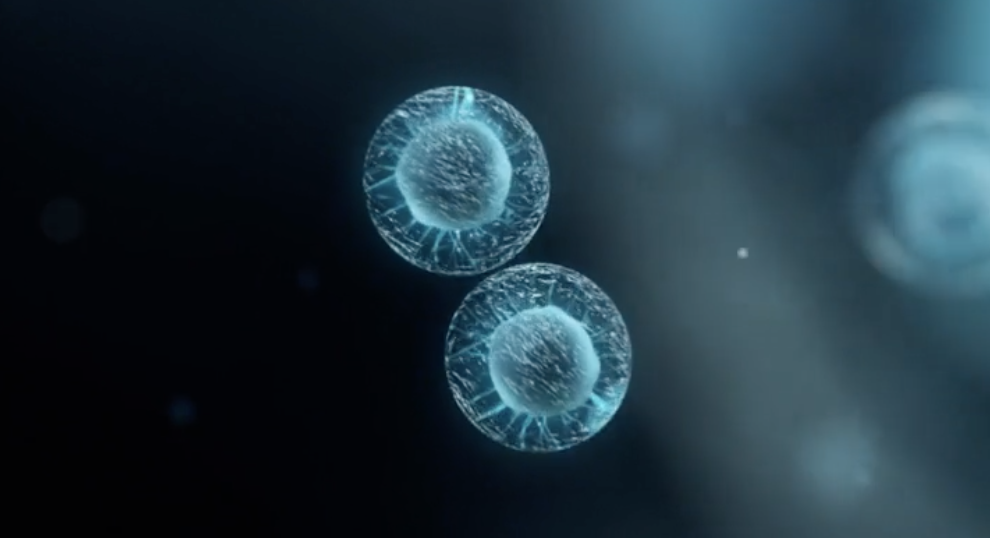John Blowes: Halton Lune Hydro

John is the Director, Project Manager and Chairman of Halton Lune Hydro – a community owned hydro-electric project generating around 750MWh of electricity per year – situated on the River Lune, just a few miles inland from Morecambe Bay in Lancashire. John received an MBE in 2019 for services to renewable energy and the community in Lancaster. In this interview with our Chief Storyteller Isabelle Sparrow, he shares some of the challenges and successes of working on this scheme over the last decade.
JB: I worked on the project from the very beginning with the secretary Brian Jefferson.
IS: And when was the very beginning? When did the whole project kick off?
JB: We started making applications to the Environment Agency in 2012, and the first turbine went in in December 2014.

IS: I know that it supplies the energy for the Lancaster cohousing project – was this project set up at the same time?
JB: Actually, it was running parallel with the construction, and we shared the cost of what we call a “microgrid”, our cables that go from this little power station to their co-housing. The energy supplies their houses, they have the first choice of it and what’s left over (which is quite a lot) goes off into the national grid and serves the local village. It does around 200-300 houses, more at night because if nobody’s using their washing machines, it goes further! There’s also 90 kilowatts of solar panels on the cohousing, which also feeds this micro grid, so it’s a mix of renewable energies.
IS: So how did you get involved in this? What’s your background?
JB: I’m a power generation engineer and project manager, which originally was for diesel power stations. I built and commissioned and was involved in a lot overseas, UK and ships. I came up here to build for diesel power stations. I got to know a few people – this is early seventies I’m talking about – and Brian Jefferson who is now the secretary, he said: ‘John, shall we build a hydro scheme on the River Lune?’ So we did!
IS: Just like that!
JB: There was a bit of resistance, initially. This river is one of the four UK index rivers for salmon and sea trout. That was very sensitive and particularly fishing groups, both locally and nationally, objected to it. There is a determination document that went through the EA (Environment Agency), which is around 80-90 pages long with questions and replies. I think everyone is now happy with the outcome. The fishermen love it. There’s a fish pass and it’s easier to catch them! There’s also research work that the EA are doing to help monitor and protect the fish species. They do health checks and take samples and in theory, from the DNA of the scale samples, they can tell where the fish came from.

IS: So, actually, as a sort of co-benefit of setting the hydro up, you’ve got a research facility there in terms of conservation?
JB: Yes, and there are other co-benefits too. We raised the money for the project through selling shares – we had 450 shareholders originally, mostly friends and family and people from the local community. They have made a pretty decent return on their investment and the money we get from selling the energy back to the grid is also creating a positive impact. It goes into the Halton Lune Trust, which was set up as a charity, with Trustees who review applications for grants and decide where the money will do the most good. There have been all sorts of things, new goals for the local football field, renovation of the toilets in our community centre, refurbishment of Halton War Memorial Garden. Lots of local projects have benefited.
IS: I know that you had some issues around Storm Desmond in 2015. Can you talk a little bit about that?
JB: The design and heights of everything on the hydro were all set on the highest ever known water levels. We set the door to the main building one metre above the highest ever known flood, and built a retaining wall which was not really meant to be breached. But in Storm Desmond it was.
IS: So, what happened after the storm?
JB: Well, if you look at this diagram, this was how we planned the building – so you can see the line which was the previous high flood level, and how far above that Storm Desmond came. So now we have built these flood-stop barriers, but obviously at the time we didn’t have them, so it did fill the building completely with horrible mud. Outside the building itself, it also filled the fish pass with stones, which cost us hugely to repair. The power of the water during Desmond, it was like 1700 cars a second going by.

IS: I mean, it’s really impressive in some ways that the whole thing wasn’t swept away with that sort of pressure on it, but I suppose it’s very strong?
JB: It’s what we call “14 Newton concrete”. And goes down a long way, you know? It goes down below the ground as much as it sits above it. So it is well secured! The speed of the water down the side of the building, however, washed out all the ground and left the cables exposed. So now we have built this barrier to stop it rushing through.
IS: Were you affected much by the storms earlier this year?
JB: Luckily they didn’t hit as strongly over this side of the country, but there has definitely been an increase over the past few years in these major weather events, and the river is certainly more often full and fast flowing. When the water is high it can impact the turbines and in fact at peak times they don’t run at all. So climate change is definitely being felt here.
Video credit: Adam Fish
IS: Can you tell me about the team you’ve built to run this thing – obviously you and Brian were both very keen, and had relevant backgrounds, but it’s now a lot bigger than the two of you so how difficult has it been to get people involved to support the project?
JB: I think we were perhaps a bit naïve at the beginning, in terms of the effort it would take! But we do have lots of really enthusiastic volunteers now and there are people with really useful skills – like we’ve got a data analyst and she’s brilliant because she can really help with all the reporting and fish counts we do for the Environment Agency. I think the project appealed to local retirees because it’s in a beautiful spot, it’s very popular with dog walkers so there is a sort of social aspect to it as well, and we have found that people aren’t so concerned with the level of work it takes because they are able to see the positive outcomes and the good that it is doing.
Recommended from Carbon Copy
-
 Affordable Energy, Buildings & Places, Climate Action, Good Food, Greater Fairness, Health & Wellbeing, Less Waste, More Jobs, Strong Communities
Affordable Energy, Buildings & Places, Climate Action, Good Food, Greater Fairness, Health & Wellbeing, Less Waste, More Jobs, Strong CommunitiesCopy these! 5 big local ideas about creating a community hub.
Learn how communities are reinvigorating once-forgotten spaces, to bring local environmental, social and economic benefits.
-

How to Choose a Sustainable Christmas Tree: Real vs Fake
As you’re gearing up for the festive season, the question of which Christmas tree to bring home might come up.…
-

Carbon.Copy.
We are natural born copiers. It’s something all of us do, all the time. Our collective power comes from how…
-

The Silent Killer
UK Heatwaves It starts with something as seemingly harmless as a hot, sunny day. In the UK, the Met Office…